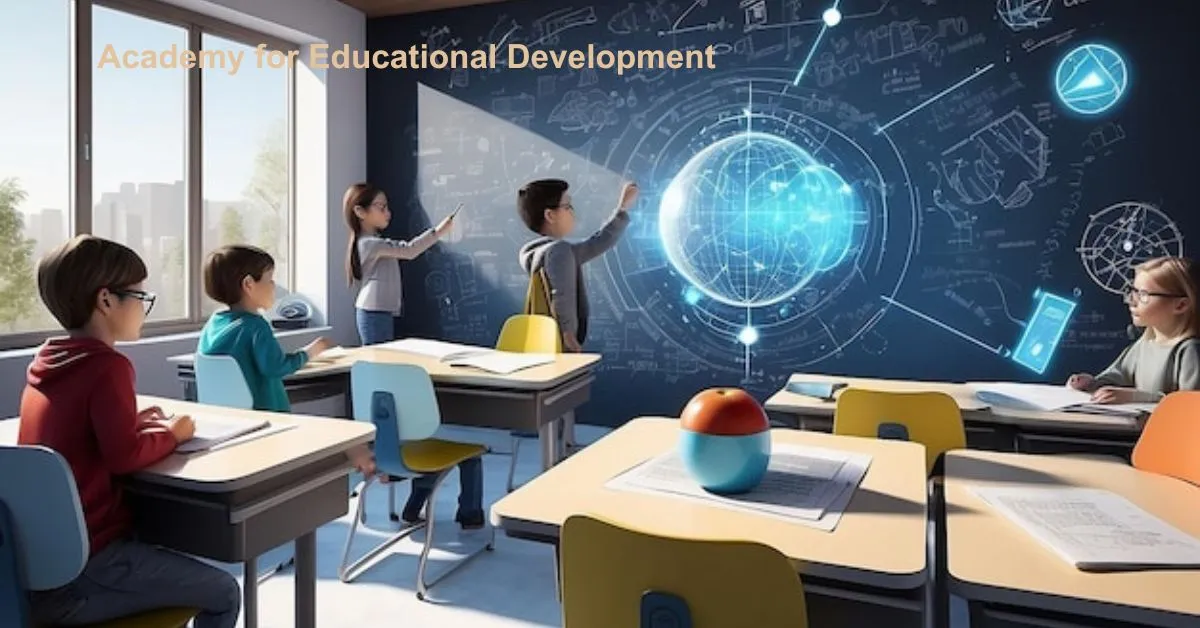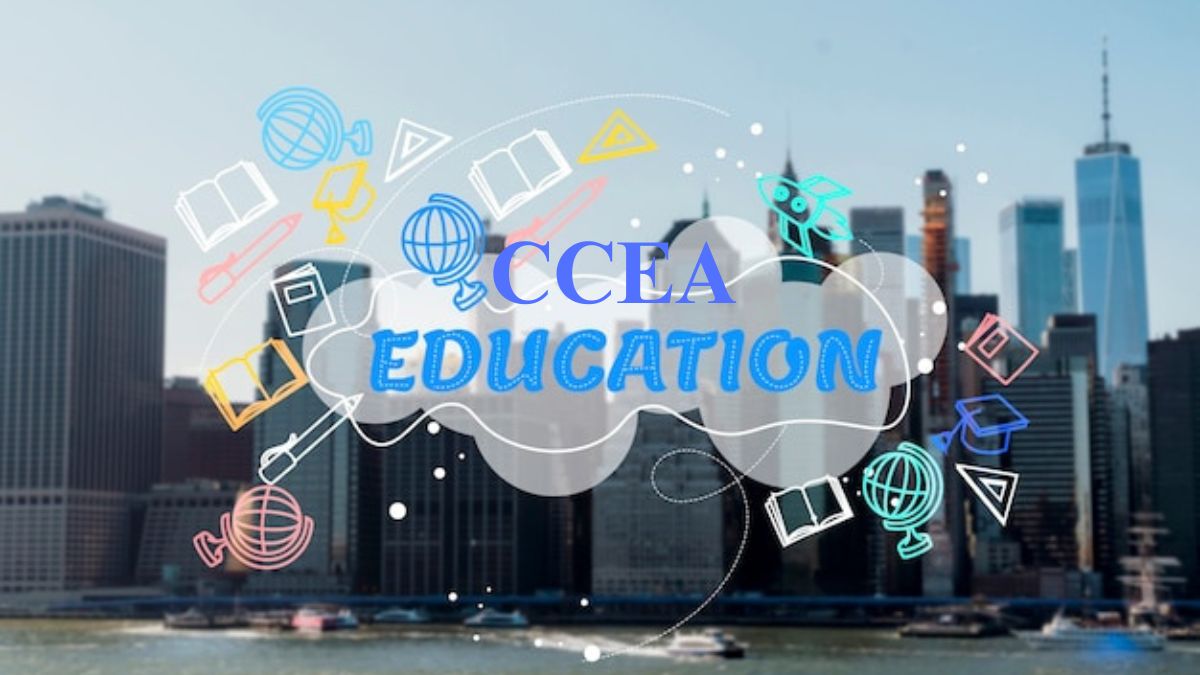Education
What It Takes To Become a Reading Specialist

Becoming a reading specialist requires a unique blend of passion, expertise, and educational background. These educators are crucial in helping students develop essential literacy skills that are foundational to academic success and lifelong learning.
With a focus on diagnosing reading difficulties and implementing effective interventions, reading specialists fulfill a key role within schools.
If you are considering a career dedicated to fostering literacy, understanding what it takes to succeed in this specialization is the first step. Below, we delve into the essential aspects of becoming a reading specialist.
Understanding the Role of a Reading Specialist
At the heart of literacy education, reading specialists are educators who work closely with students to improve their reading skills.
Often, they are called upon to assess students’ reading levels, identify specific learning disabilities, and tailor reading programs to meet diverse needs.
Their work is not limited to individual students; reading specialists also support classroom teachers by providing resources and strategies for promoting literacy across all student groups.
Reading specialists also often engage in addressing broader literacy challenges within schools or districts. They contribute to curriculum development, conduct professional development for peers, and stay abreast of the latest best practices in literacy instruction.
Furthermore, they may extend their support beyond the classroom by collaborating with parents and community organizations to nurture a culture of reading.
Educational Requirements for Aspiring Reading Specialists
The path to becoming a reading specialist begins with a solid educational foundation, typically with an undergraduate degree in education or a closely related field.
However, while a bachelor’s degree is an essential stepping stone, most positions require advanced degrees. A master’s degree in reading, literacy, or a similar specialization is often considered the standard credential for this role.
In addition to an advanced degree, aspiring specialists can greatly benefit from a masters in bilingual education.
This further education could be particularly valuable in areas with a high population of English language learners (ELLs).
The specialized training ensures that reading specialists possess the necessary skills and knowledge to support literacy development in diverse and multilingual settings.
Coursework for reading specialists covers a range of topics such as reading assessment, curriculum development, instructional strategies for struggling readers, and language development.
These advanced programs often include practicum experiences, allowing candidates to apply their learning in real-world educational settings. This hands-on experience is critical in preparing them to face the multifaceted challenges of literacy education.
Reading specialists recognize that professional development is an ongoing journey. Engaging in continuous learning opportunities enables them to refine their teaching methodologies and to keep pace with advancements in literacy education. Many choose to attend workshops, seminars, and conferences regularly to exchange ideas and learn from peers in the field.
In addition to attending professional development events, reading specialists often participate in collaborative learning communities.
These networks can be within their schools or expansive, encompassing national or international organizations dedicated to literacy education.
By sharing resources and strategies, they contribute to a collective knowledge base that enhances the quality of literacy instruction.
Some reading specialists take their professional growth a step further by contributing to the field through research and publishing.
Their insights from the frontline of education can lead to new pedagogical approaches and even influence policy and program decisions.
They may also serve as mentors or college guidance counselor, shaping the next generation of educators committed to literacy.
Essential Skills and Competencies for Reading Specialists
Academic qualifications aside, successful reading specialists embody a set of core skills and competencies. Strong interpersonal abilities are paramount as they frequently interact with students, teachers, parents, and other educational stakeholders.
Empathy and patience are virtues in this field, considering the varied and often sensitive nature of literacy challenges faced by learners.
Another crucial skill is problem-solving, as reading specialists must devise and implement effective strategies tailored to individual reader needs.
They should be adept at using varied instructional methods and technologies to engage students and track their progress.
An analytical mindset coupled with data literacy skills is also necessary to interpret student performance and adjust instruction accordingly.
Overall, the journey to becoming a reading specialist is multifaceted, combining educational achievements with the cultivation of a diverse set of skills and ongoing professional development.
These dedicated educators do not only teach reading; they are pillars of support that foster literacy and learning across entire school communities.
For those compelled by a passion for empowering others through literacy, the role of a reading specialist offers a rewarding, impactful career.
Education
Understanding FAFSA: Your Gateway to College Financial Aid

In the journey toward higher education, financial considerations often play a pivotal role. The Free Application for Federal Student Aid (FAFSA) stands as a cornerstone for millions of students in the United States seeking financial assistance to pursue their academic dreams. This comprehensive guide explores everything you need to know about FAFSA, from its significance and application process to tips for maximizing aid opportunities.
What is FAFSA?
The Free Application for Federal Student Aid (FAFSA) is an essential form used by college students and prospective students annually to apply for various forms of financial aid. Managed by the U.S. Department of Education, FAFSA determines eligibility for federal grants, scholarships, work-study programs, and federal student loans. It’s a crucial step for accessing financial resources that can make higher education more affordable and accessible.
Importance of FAFSA
FAFSA plays a pivotal role in the college financial aid landscape for several reasons:
- Access to Federal Aid: It serves as the gateway to federal financial aid programs like Pell Grants, Federal Supplemental Educational Opportunity Grants (FSEOG), and Direct Loans.
- State and Institutional Aid: Many states and colleges use FAFSA information to determine eligibility for their own financial aid programs, making it essential for accessing a broader range of funding opportunities.
- Financial Planning: FAFSA provides a clear picture of a student’s financial need, helping families plan for college costs effectively.
- Renewable Aid: Since financial situations can change yearly, renewing FAFSA annually ensures continuous eligibility for aid throughout a student’s college career.
Eligibility and Requirements
Eligibility for FAFSA is primarily based on financial need, but several factors come into play:
- Citizenship and Residency: U.S. citizens, permanent residents, and eligible non-citizens can apply.
- Income and Dependency Status: Both the student’s and, if applicable, their parents’ income and assets are considered, along with household size and number of family members in college.
- Academic Status: Applicants must be enrolled or accepted for enrollment in an eligible degree or certificate program.
Applying for FAFSA
The process of applying for FAFSA involves several key steps:
- Gathering Information: Collect necessary documents such as Social Security numbers, tax returns, W-2 forms, and records of untaxed income.
- Creating an FSA ID: Both the student and one parent (for dependent students) must create a Federal Student Aid (FSA) ID to electronically sign the FAFSA form.
- Completing the Form: The FAFSA form is available online and typically opens on October 1st for the following academic year. It includes detailed sections about financial information, household size, and dependency status.
- Submitting and Reviewing: After submission, applicants receive a Student Aid Report (SAR) summarizing their eligibility for federal aid. It’s crucial to review this report for accuracy and make any necessary corrections promptly.
Tips for Maximizing Financial Aid
Navigating the FAFSA process can be daunting, but several strategies can help maximize aid opportunities:
- Submit Early: FAFSA opens on October 1st, and some aid programs have limited funds, so early submission increases the chances of receiving maximum aid.
- Use IRS Data Retrieval Tool: This tool simplifies the process by transferring tax information directly from the IRS into the FAFSA form, reducing errors and processing time.
- Provide Accurate Information: Any discrepancies or inaccuracies can delay processing or affect eligibility for aid, so double-check all information before submission.
- Seek Additional Assistance: College financial aid offices and online resources provide guidance and support throughout the FAFSA process, ensuring students understand their options and obligations.
Additional Resources
For more information and to complete your FAFSA, visit studentaid.gov. College financial aid offices also provide personalized assistance and guidance to help you through the process.
This article provides a comprehensive overview of FAFSA, its importance, application process, eligibility criteria, and tips for maximizing aid opportunities. Understanding these aspects empowers students and families to make informed decisions about financing higher education.
Conclusion
FAFSA is not just a form but a gateway to opportunities for millions of students pursuing higher education in the United States. By understanding its significance, navigating its requirements, and utilizing available resources, students and families can effectively manage college costs and access the financial aid needed to achieve academic success. Whether you’re a prospective student embarking on your college journey or a returning student navigating financial aid renewal, FAFSA remains an essential tool for turning educational aspirations into reality.
Education
Academy for Educational Development: Teaching for a Better Future

Education is the foundation of any progressive society, serving as the backbone for future growth and development. But what exactly constitutes educational development, and why is it so vital? Academy for Educational Development involves the improvement of teaching methods, curriculum design, and learning environments to enhance educational outcomes. It’s the process of making education more effective, accessible, and equitable for all.
What is an Academy for Educational Development?
An Academy for Educational Development (AED) is a specialized institution focused on advancing educational practices through research, training, and innovation. These academies aim to improve the quality of education by developing new teaching strategies, creating effective curricula, and fostering an environment conducive to learning. The ultimate goal is to ensure that educators are well-equipped to meet the diverse needs of their students and to help students reach their full potential.
History and Evolution
Early Beginnings
The concept of educational development has been around for centuries, evolving significantly over time. Initially, it involved basic teacher training and curriculum development. However, as educational needs grew more complex, the focus expanded to include various aspects of teaching and learning, such as technology integration and student engagement.
Significant Milestones
Over the years, many significant milestones have marked the evolution of educational development. These include the establishment of dedicated educational development institutions, the integration of technology into classrooms, and the development of comprehensive training programs for educators. Each of these milestones has contributed to making education more effective and inclusive.
Key Components of Educational Development
Curriculum Design
One of the critical components of educational development is curriculum design. This involves creating a structured plan of what will be taught and how it will be delivered. A well-designed curriculum ensures that all students have access to the necessary knowledge and skills they need to succeed.
Teacher Training
Effective educational development cannot occur without proper teacher training. This involves equipping teachers with the skills and knowledge they need to deliver high-quality education. Training programs often include workshops, certification courses, and continuous professional development opportunities.
Student Engagement
Engaging students in the learning process is another essential component. This involves using various techniques and strategies to make learning more interesting and interactive. When students are engaged, they are more likely to retain information and perform better academically.
Technology Integration
In today’s digital age, integrating technology into the classroom is crucial. This includes using digital tools and resources to enhance teaching and learning. Technology can provide students with access to a wealth of information and can make learning more interactive and engaging.
Benefits of an Academy for Educational Development
Improved Teaching Standards
One of the primary benefits of an AED is the improvement of teaching standards. By providing educators with the necessary training and resources, these academies ensure that teachers are well-prepared to deliver high-quality education.
Enhanced Student Learning Outcomes
When teaching standards improve, so do student learning outcomes. AEDs help create an environment where students can thrive academically, leading to better grades, higher test scores, and improved overall academic performance.
Professional Growth for Educators
AEDs also contribute to the professional growth of educators. By participating in training programs and workshops, teachers can enhance their skills and advance their careers. This not only benefits the teachers themselves but also the students they teach.
Community Impact
Improving education has a ripple effect on the community. When students receive a quality education, they are more likely to become productive members of society. This, in turn, can lead to economic growth and a more vibrant community.
Challenges Faced by Educational Development Academies
Funding Issues
One of the significant challenges AEDs face is securing adequate funding. Education is often underfunded, and without sufficient financial resources, it can be challenging to implement effective programs and initiatives.
Policy and Regulation Hurdles
Educational policies and regulations can also pose challenges. Navigating these can be complex and time-consuming, and they can sometimes hinder the implementation of innovative educational practices.
Adapting to Technological Changes
With technology constantly evolving, keeping up with the latest advancements can be a challenge. AEDs must continually adapt their practices to incorporate new technologies effectively.
Successful Models Around the World
Case Study: Finland
Finland is renowned for its exceptional educational system. The country places a strong emphasis on teacher training and student well-being, resulting in high student performance and satisfaction.
Case Study: Singapore
Singapore’s education system is another successful model. The country focuses on rigorous teacher training and a well-rounded curriculum, which has led to excellent academic outcomes.
Case Study: United States
In the United States, various AEDs have implemented innovative programs to improve education. These include incorporating technology into the classroom and developing comprehensive teacher training programs.
Implementing Effective Strategies
Needs Assessment
Before implementing any educational development initiatives, it’s crucial to conduct a needs assessment. This involves identifying the specific needs and challenges of the educational system and developing strategies to address them.
Collaborative Approaches
Collaboration is key to successful educational development. This includes working with teachers, students, parents, and the community to create a supportive learning environment.
Continuous Professional Development
Continuous professional development is essential for educators. This involves providing ongoing training and development opportunities to ensure that teachers can keep up with the latest educational practices and technologies.
Role of Technology in Educational Development
Digital Classrooms
Digital classrooms are becoming increasingly popular in today’s educational landscape. These classrooms use digital tools and resources to enhance teaching and learning, making education more interactive and engaging.
E-Learning Platforms
E-learning platforms provide students with access to educational resources anytime, anywhere. These platforms can be particularly beneficial for students who need additional support or who are unable to attend traditional classes.
Data-Driven Decision Making
Using data to inform decision-making is another important aspect of educational development. This involves collecting and analyzing data on student performance to identify areas for improvement and to develop effective strategies.
Training Programs and Workshops
Teacher Certification Programs
Teacher certification programs are essential for ensuring that educators have the necessary skills and knowledge. These programs provide comprehensive training and are often required for teachers to work in specific educational settings.
Leadership Training
Leadership training is also crucial for educational development. This involves training school leaders and administrators to effectively manage and support their staff and students.
Student Development Workshops
Student development workshops provide students with additional support and resources. These workshops can cover various topics, such as study skills, time management, and career planning.
Community and Parental Involvement
Importance of Community Engagement
Engaging the community is essential for successful educational development. When the community is involved, it creates a supportive environment for students and can lead to better educational outcomes.
Strategies for Parental Involvement
Parental involvement is also crucial. This includes encouraging parents to participate in school activities, communicate regularly with teachers, and support their children’s learning at home.
Policy Recommendations
Government Support
Government support is vital for educational development. This includes providing adequate funding, developing supportive policies, and ensuring that all students have access to quality education.
Private Sector Involvement
The private sector can also play a role in educational development. This includes providing funding and resources, as well as collaborating with educational institutions to develop innovative programs.
International Collaboration
International collaboration can help share best practices and develop effective educational strategies. This involves working with educational institutions and organizations from around the world to improve education globally.
Future Trends in Educational Development
Artificial Intelligence
Artificial intelligence (AI) is set to play a significant role in the future of education. AI can provide personalized learning experiences, automate administrative tasks, and analyze student performance data to identify areas for improvement.
Personalized Learning
Personalized learning is another emerging trend. This involves tailoring education to meet the individual needs and preferences of each student, ensuring that they receive the support and resources they need to succeed.
Global Education Networks
Global education networks are also becoming increasingly important. These networks connect educators and students from around the world, providing access to a wealth of resources and fostering collaboration.
Conclusion
Academies for educational development play a crucial role in improving the quality of education. By focusing on curriculum design, teacher training, student engagement, and technology integration, these academies help ensure that all students receive a high-quality education. Despite the challenges they face, such as funding issues and policy hurdles, AEDs continue to make significant strides in advancing education. Looking ahead, the future of educational development is bright, with emerging trends like AI and personalized learning set to revolutionize the way we educate our students.
FAQs
What is the main goal of an Academy for Educational Development?
The main goal of an AED is to improve the quality of education by developing effective teaching strategies, creating comprehensive curricula, and fostering an environment conducive to learning.
How can parents contribute to educational development?
Parents can contribute by participating in school activities, communicating regularly with teachers, and supporting their children’s learning at home.
What role does technology play in modern educational development?
Technology enhances teaching and learning by providing digital tools and resources, enabling e-learning, and facilitating data-driven decision-making.
Why is teacher training crucial for educational development?
Teacher training is crucial because it equips educators with the skills and knowledge they need to deliver high-quality education and support their students effectively.
How do academies for educational development impact communities?
AEDs impact communities by improving educational outcomes, leading to a more educated and productive population, which can drive economic growth and enhance community well-being.
Education
Clark County Education Association: Empowering Education in Southern Nevada

Organisations like the Clark County Education Association (CCEA) play a crucial role in assuring the quality of education in Southern Nevada, because education is the cornerstone of any society’s growth. In this piece, we’ll examine the background, achievements, and influence of CCEA in the area.
Understanding Clark County Education Association (CCEA)
The Clark County Educators’ Association (CCEA) is a highly visible advocacy group for Clark County, Nevada’s educators, instructors, and educational support workers. It is a nonprofit organisation whose mission is to promote excellence in education and to assist those who work in the field.
History of CCEA
CCEA has a long history of advocating for educational concerns in Southern Nevada. It was set up so that local teachers could communicate with one another and pool their resources to better serve their students.
CCEA’s Mission and Goals
CCEA’s goal is to provide every Clark County student with an excellent education and to equip every educator with the tools they need to succeed. Professional growth, improved working conditions, and more involvement in the local community are all priorities for them.
The Role of CCEA in Education
CCEA is vital to education in many ways. It fights for teachers’ rights to earn a living wage and works to improve their working conditions in order to benefit their pupils. In addition, the group offers helpful materials for teachers.
Benefits of CCEA Membership
Educators can benefit in many ways by joining CCEA. As a member, you’ll have the chance to network with other educators and further your career, as well as receive legal representation if you need it. CCEA gives its members the tools they need to be successful teachers.
Challenges Faced by CCEA
CCEA, like any other organisation, confronts obstacles on its path to achieving its goal of enhancing education. CCEA is dedicated to its mission regardless of funding concerns, governmental shifts, or social obstacles.
CCEA’s Impact on the Community
CCEA does not limit itself to the confines of the classroom. As a result of their hard work, the local community benefits from an improved and more well-educated populace.
Advocacy Efforts by CCEA
CCEA fights tirelessly for measures that improve education for teachers and their students. To spread word of their cause, they organise lobbying efforts, grass-roots campaigns, and public awareness campaigns.
Collaborations and Partnerships
To accomplish its objectives, CCEA partners with several educational institutions, government agencies, and community groups. Their combined efforts will have a greater impact.
The Future of CCEA
CCEA is committed to continuing to shape the educational environment of Southern Nevada as it evolves. Because of their flexibility and perseverance, they will continue to be an influential group in the field of education.
How to Join CCEA
CCEA has a simple membership process for educators who desire to become a part of this influential organisation. By joining, you’ll be connected to a group of educators who share your passion for the profession and are committed to its improvement.
Success Stories and Testimonials
Learn directly how CCEA’s efforts have impacted the lives and careers of educators from those in the field. Their experiences highlight the significance and commitment of the group.
Conclusion
Educators and students in Southern Nevada have a ray of light in the form of the Clark County Education Association. The significance of this organisation is demonstrated by its dedication to high standards in education, advocacy, and community service. Participate in the improvement of Clark County’s educational system by joining CCEA.
FAQs
1. How can I join CCEA?
Joining CCEA is easy. Visit their official website and follow the membership instructions to become a member.
2. What benefits do CCEA members receive?
CCEA members enjoy professional development opportunities, legal support, and a supportive community of educators.
3. Does CCEA only focus on teachers, or do they support all educational professionals?
CCEA represents the interests of all educators, including teachers and educational support professionals.
4. How can I support CCEA’s advocacy efforts?
You can support CCEA by staying informed about their initiatives, participating in their campaigns, and spreading awareness about the importance of quality education.
5. What is CCEA’s vision for the future of education in Southern Nevada?
CCEA aims to continue shaping the future of education by adapting to changing needs and advocating for policies that benefit educators and students.
-

 Technology8 months ago
Technology8 months ago社工库: Navigating the Depths of Social Engineering Databases
-

 News6 months ago
News6 months agoFinding the Truth Behind a Trails Carolina Death
-

 Education7 months ago
Education7 months agoFortiOS 7.2 – NSE4_FGT-7.2 Free Exam Questions [2023]
-

 Technology3 months ago
Technology3 months agoAmazon’s GPT-55X: A Revolutionary Leap in AI Technology
-

 History & Tradition9 months ago
History & Tradition9 months agoλιβαισ: Unraveling Its Mystique
-

 Education8 months ago
Education8 months agoExploring the Significance of 92career
-

 News8 months ago
News8 months agoClaudia Goldin: A Trailblazer in Understanding Gender Pay Gap
-

 Entertainment7 months ago
Entertainment7 months agoFree Tube Spot: Your Gateway to Endless Entertainment













